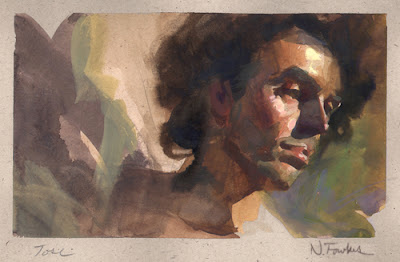
. . . . . . . . I've made an honest effort to read the literary classics. I even made it a third of the way through Ulysses. But the genre I always end up coming back to is science fiction. Especially "hard sf"; science fiction that allows any leap of the authors imagination within the boundaries of plausible science. What great fun to read about distant corners of the universe, the far future or explorations of the here and now that are not just flights of fancy. They could in some way really happen. Here are some writers who do it particularly well: Larry Niven ( Mote in God's Eye is a must) Greg Bear ( The Forge of God and especially it's sequel Anvil of Stars are excellent ) David Brin Gregory Benford Dave Wolverton (I can hardly believe that On My Way to Paradise was the first novel he wrote) Orson Scott Card (not necessarily "hard" but you'll never hear me complain) Stanislaw Lem ( you may have read Solaris , but try Fiasco ) John Brunner (







